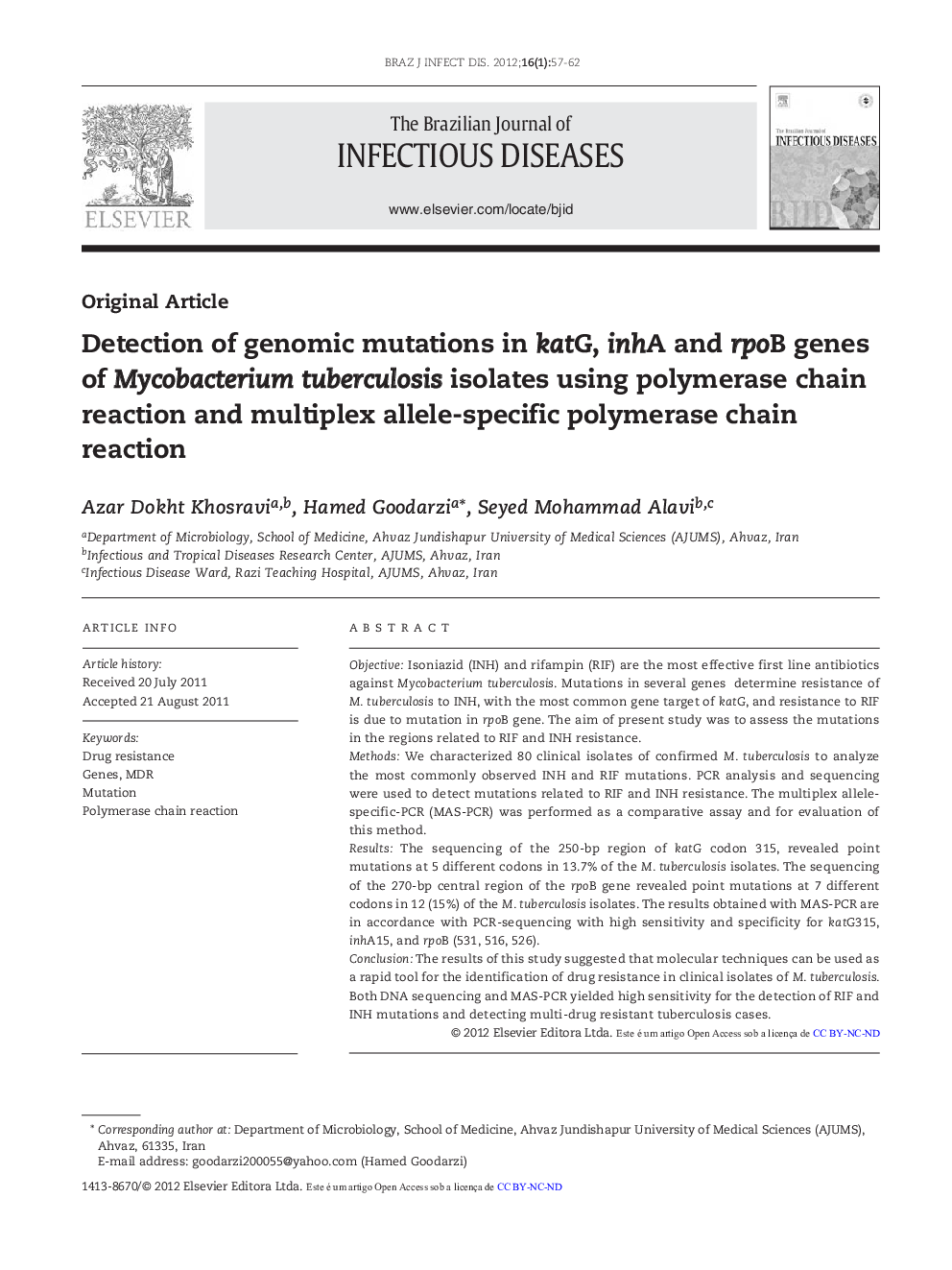| Article ID | Journal | Published Year | Pages | File Type |
|---|---|---|---|---|
| 3344437 | The Brazilian Journal of Infectious Diseases | 2012 | 6 Pages |
ObjectiveIsoniazid (INH) and rifampin (RIF) are the most effective first line antibiotics against Mycobacterium tuberculosis. Mutations in several genes determine resistance of M. tuberculosis to INH, with the most common gene target of katG, and resistance to RIF is due to mutation in rpoB gene. The aim of present study was to assess the mutations in the regions related to RIF and INH resistance.MethodsWe characterized 80 clinical isolates of confirmed M. tuberculosis to analyze the most commonly observed INH and RIF mutations. PCR analysis and sequencing were used to detect mutations related to RIF and INH resistance. The multiplex allele-specific-PCR (MAS-PCR) was performed as a comparative assay and for evaluation of this method.ResultsThe sequencing of the 250-bp region of katG codon 315, revealed point mutations at 5 different codons in 13.7% of the M. tuberculosis isolates. The sequencing of the 270-bp central region of the rpoB gene revealed point mutations at 7 different codons in 12 (15%) of the M. tuberculosis isolates. The results obtained with MAS-PCR are in accordance with PCR-sequencing with high sensitivity and specificity for katG315, inhA15, and rpoB (531, 516, 526).ConclusionThe results of this study suggested that molecular techniques can be used as a rapid tool for the identification of drug resistance in clinical isolates of M. tuberculosis. Both DNA sequencing and MAS-PCR yielded high sensitivity for the detection of RIF and INH mutations and detecting multi-drug resistant tuberculosis cases.
